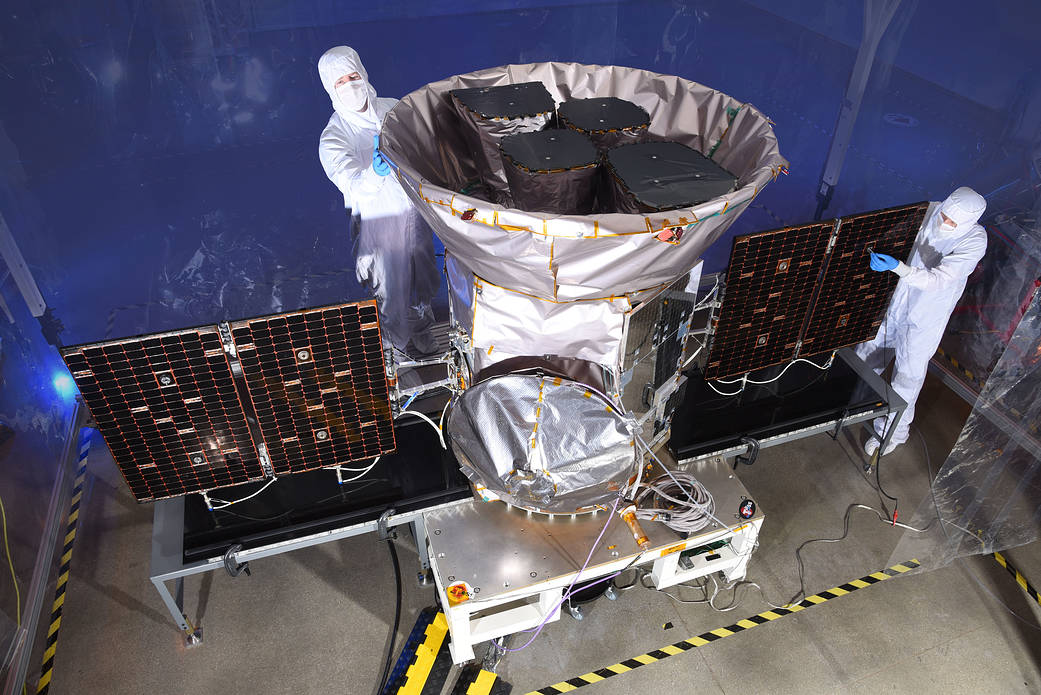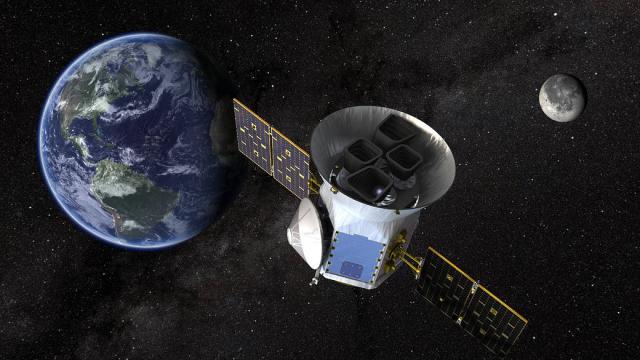On April 16, NASA is planning to launch its Transiting Exoplanet Survey Satellite, or TESS, on a SpaceX Falcon 9 rocket. TESS is an Earth-orbiting instrument meant to spot faraway planets circling some 200,000 stars within 300 light-years of Earth. Astronomers hopes that TESS will help them learn whether or not there are other habitable planets, or even life beyond the Solar System. TESS can’t do this alone, however.
Artist’s concept of TESS.Illustration: NASA
“TESS will find planets in the habitable zones around red dwarf stars,” Aki Roberge, research astrophysicist at NASA, said in February the American Association for the Advancement of Science’s annual meeting in Austin, Texas. “But just being in the habitable zone doesn’t mean you’re habitable.”
This satellite has four wide-field cameras that will cover around 85 per cent of the sky, according to a NASA release. It will sweep the sky, sector by sector, for a brief dimming of light from a star that suggests an orbiting planet. It’s basically a Kepler part two (or part three, if you consider K2 a separate mission) — and the beloved Kepler only has a few functional months left.

TESS in the lab.Photo: NASA
TESS has some advantages, though — it can look at brighter stars, and way more of them, than Kepler. It will also be able to do some spectroscopy to determine these planets’ chemical makeup.
But the satellite will be especially good at spotting perhaps another tantalising kind of planet: those orbiting red dwarf stars. Recently, planets have been found orbiting Proxima Centauri, TRAPPIST-1 and other cooler dwarf stars in their habitable zones.
This has prompted some to think that perhaps these strange little stars, so unlike our own hot sun, might be the ones with the potential for extraterrestrial life. Plus, there are lots of them.
“It’s just so much parameter space that we haven’t explored,” Emily Rice, astrophysicist at the American Museum of Natural History, told me in November. “You don’t just want one. You want a bunch of them to figure out the general properties of these things.”
But TESS probably won’t find potentially habitable planets on its own, Padi Boyd, director of the Guest Investigator Program for the TESS Mission, said at the American Association for the Advancement of Science’s annual meeting in Austin, Texas. The survey will allow scientists to prioritise some of the planets for followup studies by other telescopes, like the recently delayed James Webb Space Telescope (JWST).
In other words, TESS will tell the other telescopes where to point.
Ultimately, we might need to wait for a successor to the JWST, like the proposed LUVOIR and HabEx missions, to actually find signs of life on another planet. We know that life has altered the chemistry of Earth’s atmosphere. These future telescope concepts might be able to image exoplanets and use their light spectra to see if those planets have similar atmospheric signatures. But TESS is a start.
“I think we can give a lot of information towards whether or not an Earth-like planet is truly habitable,” said Boyd. “But answering that question really requires all our telescopes.”
